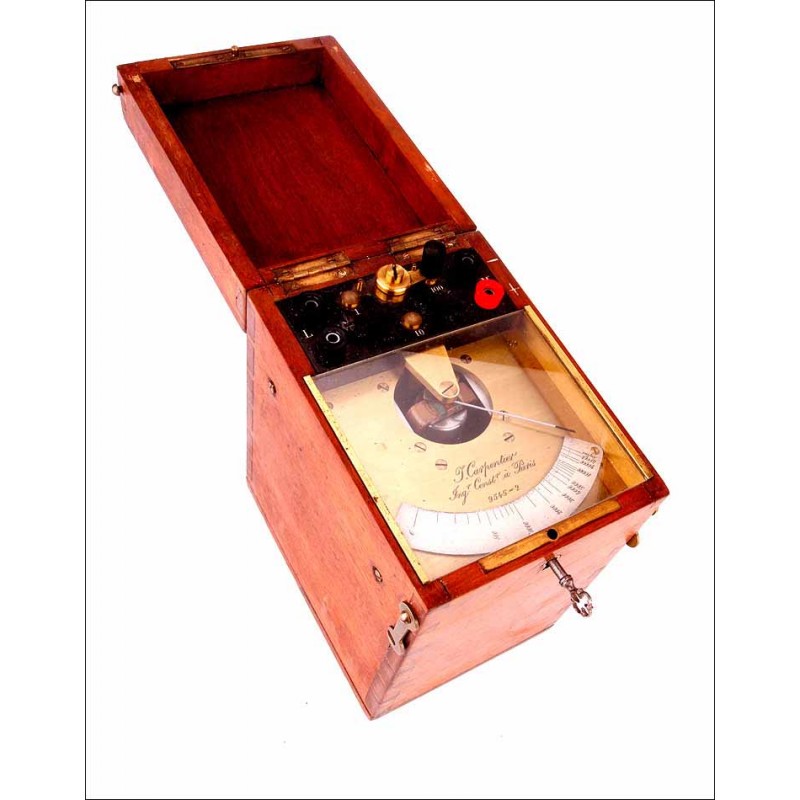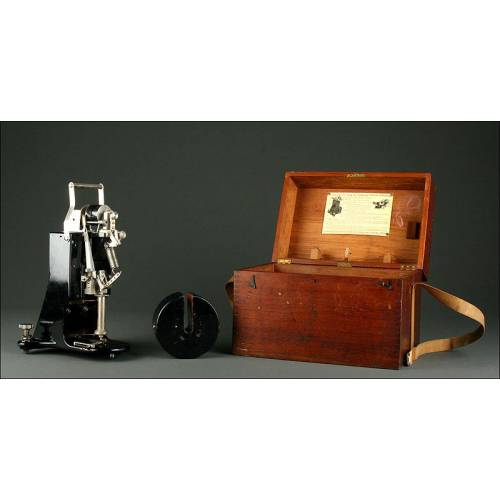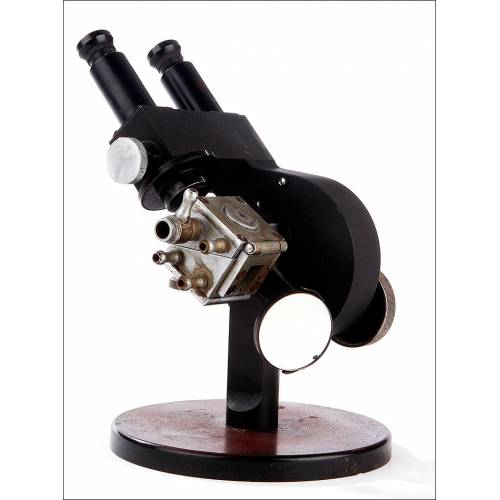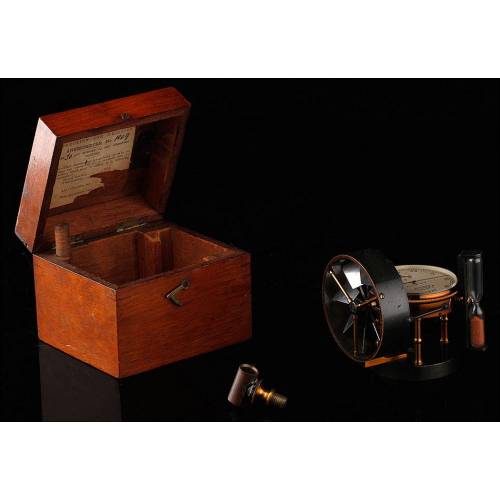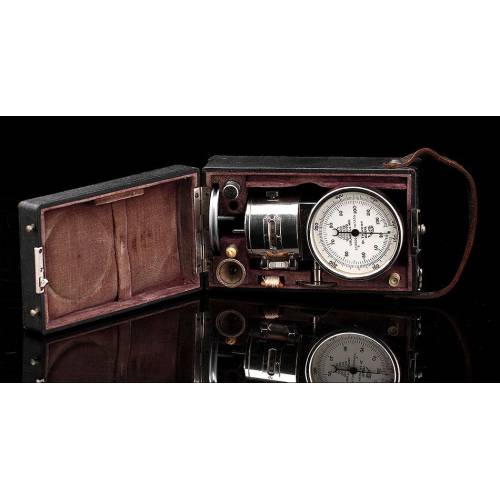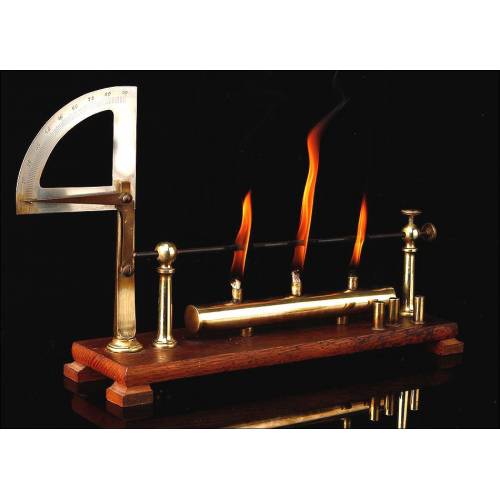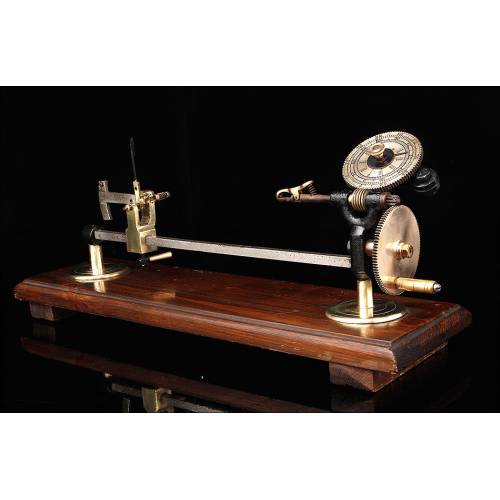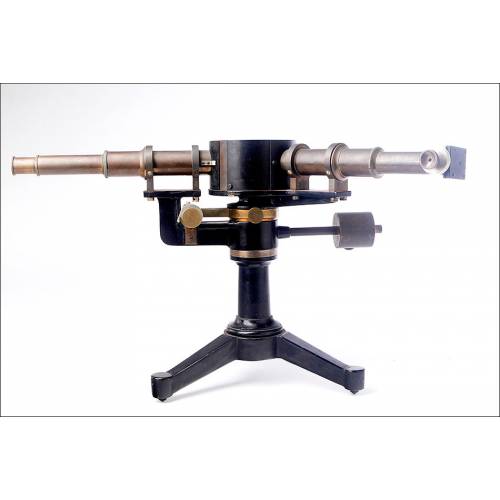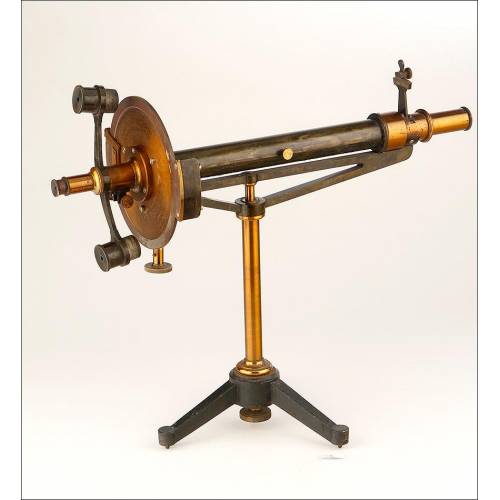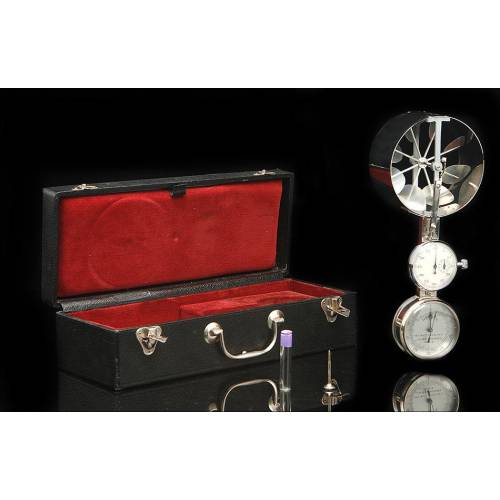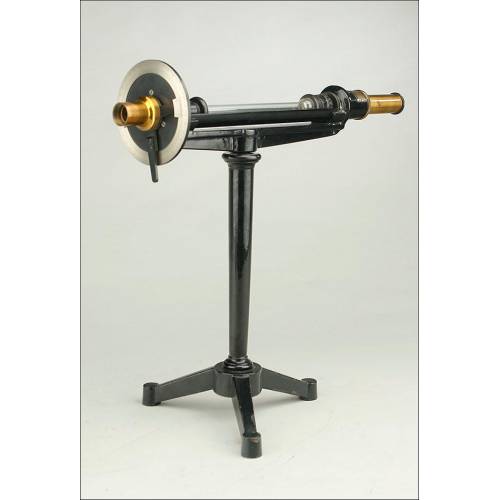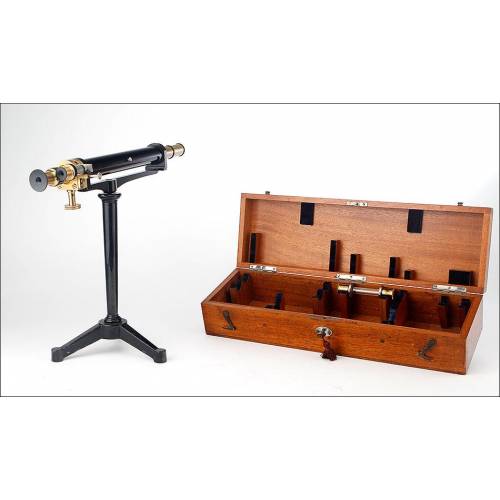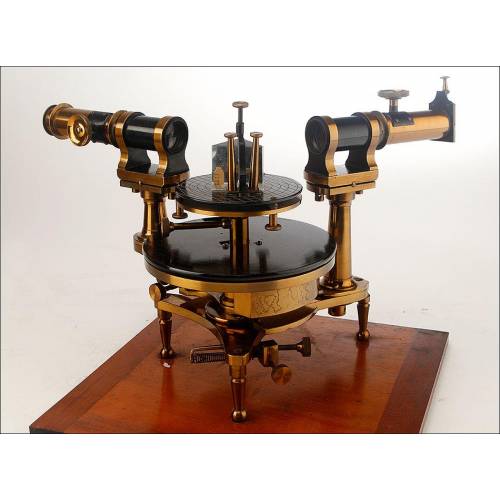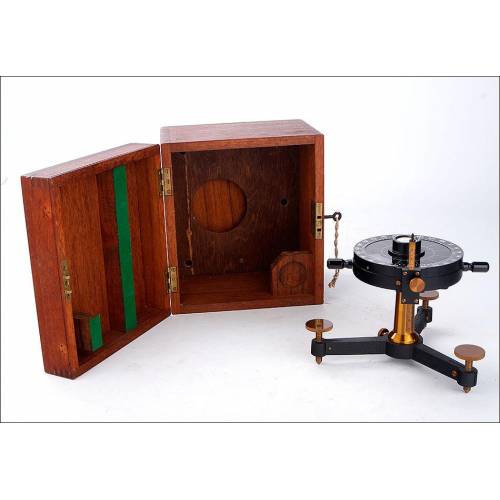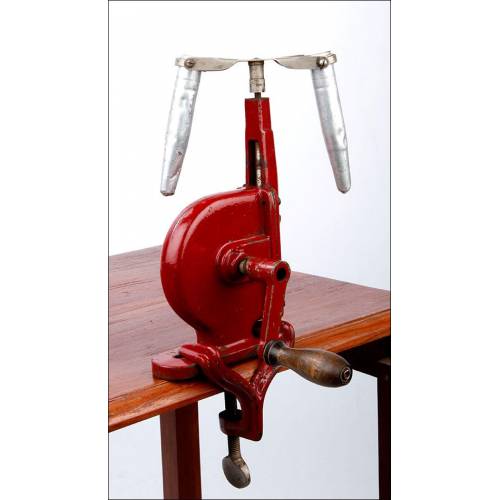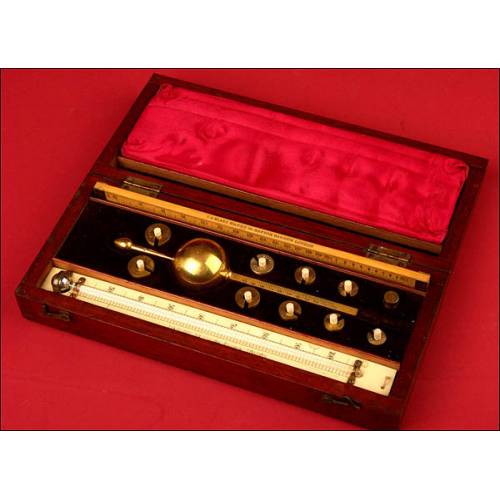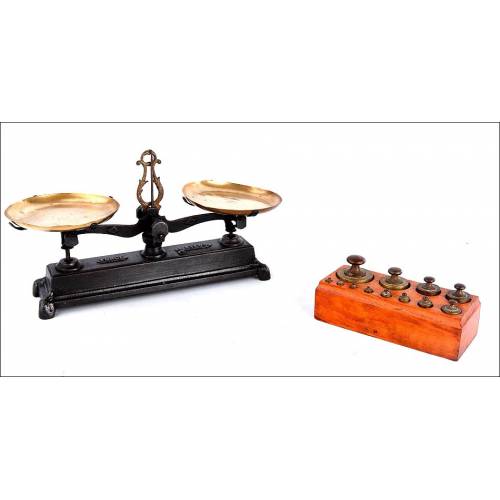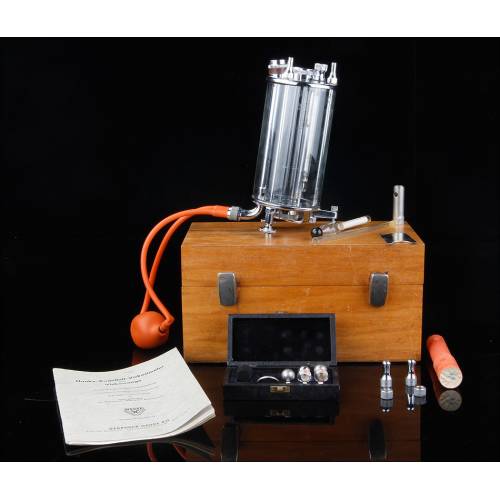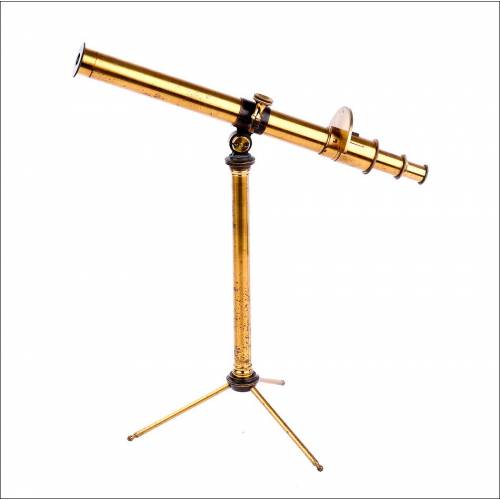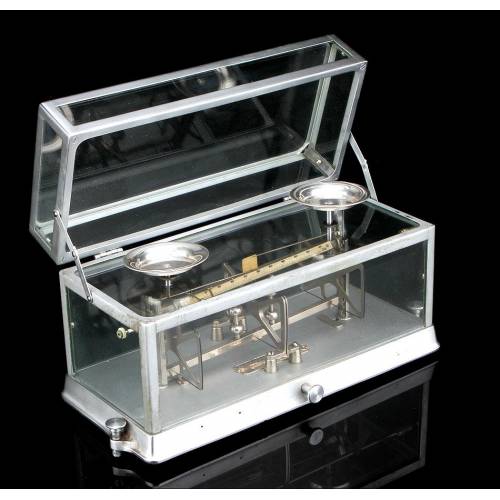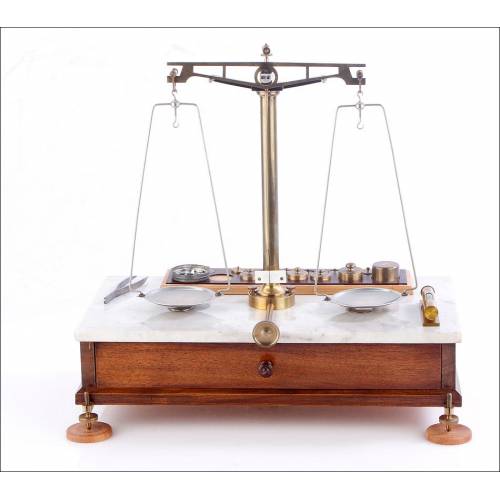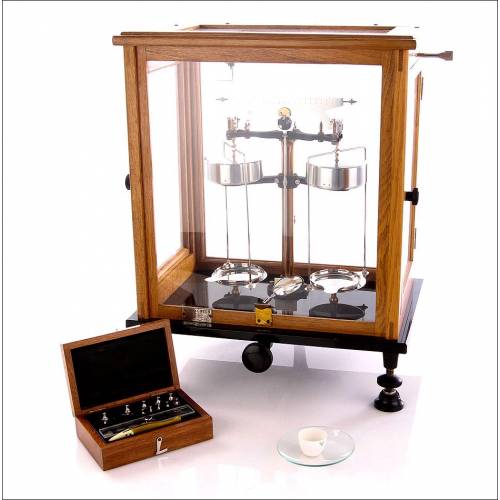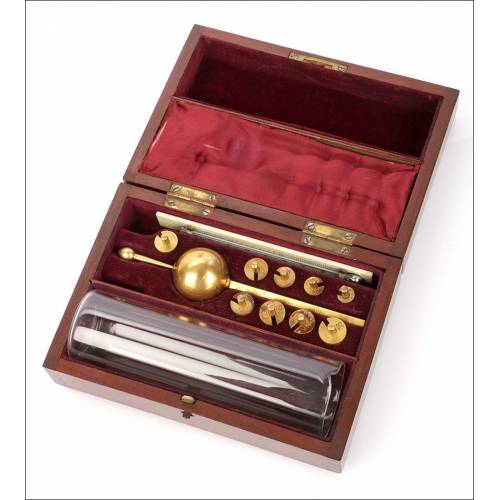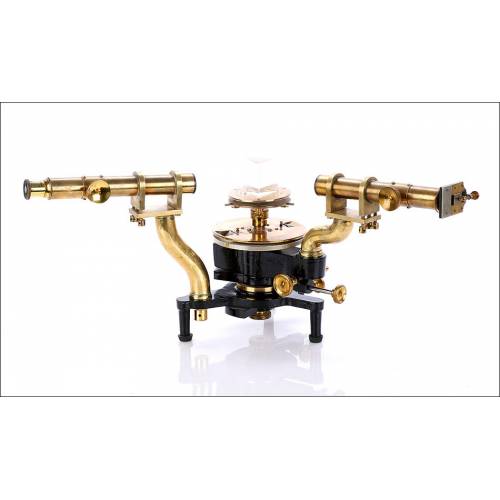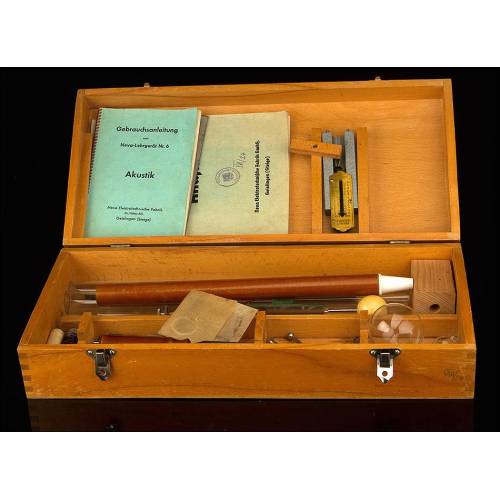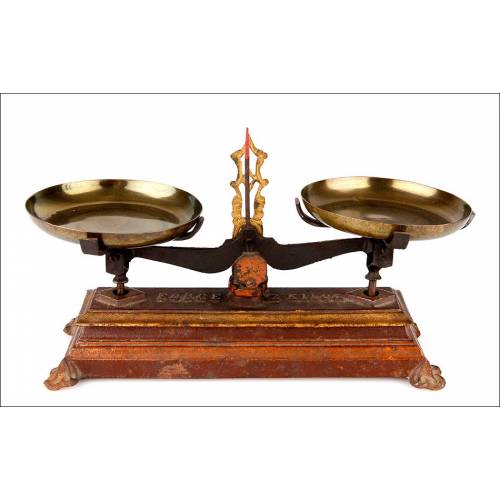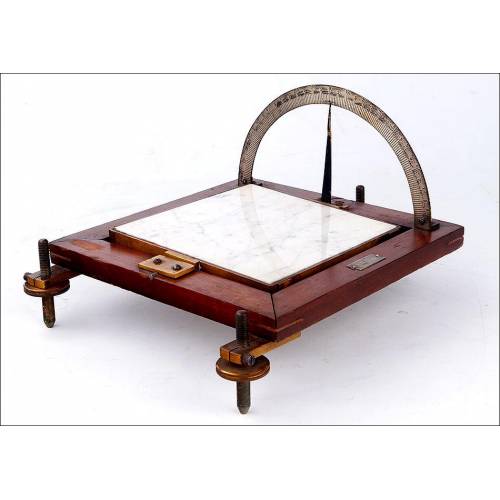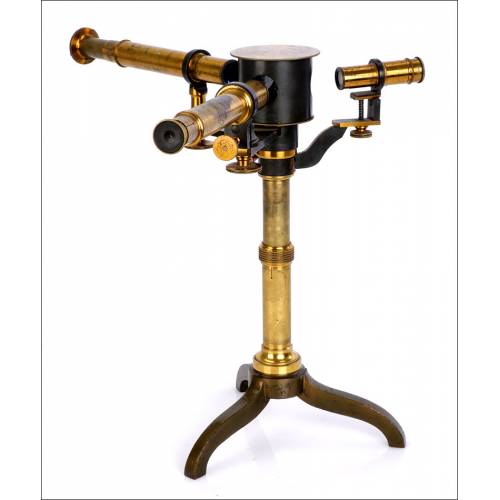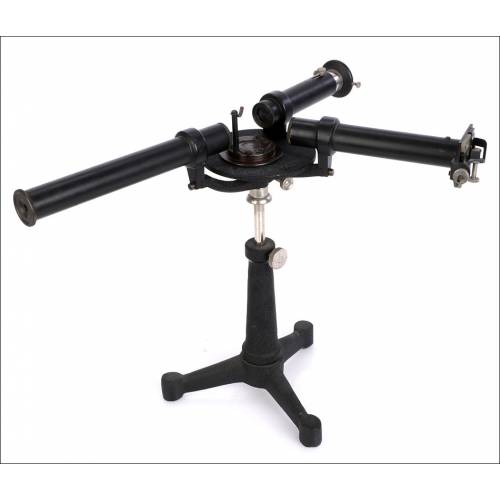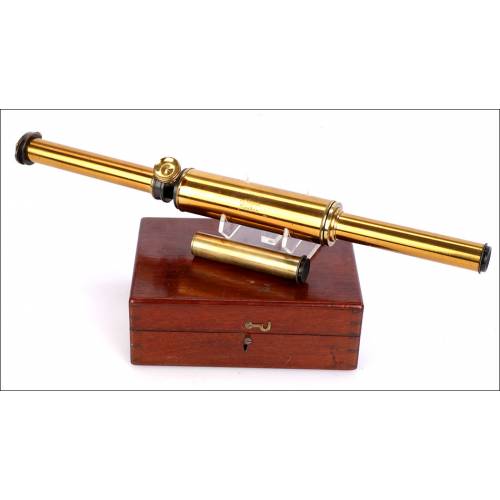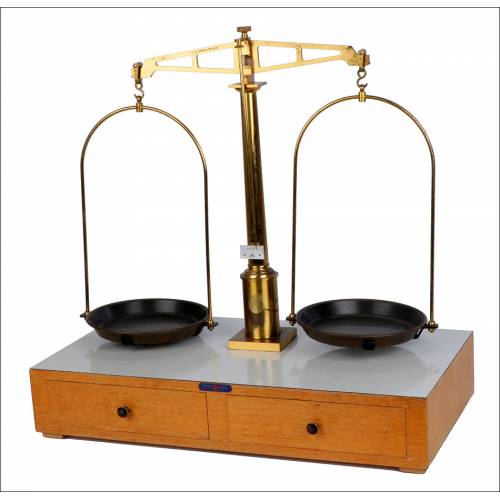B-918
J. Carpentier Antique Ohmmeter. France, Paris, 1900
Antique ohmmeter manufactured between XIX and XX centuries. Excellent state of preservation.
Sold!
This fine electrical measurement device is an ohmmeter made by J. Carpentier in Paris in the late 19th or early 20th century. The ohmmeter is in strikingly good condition. The brass plate that we can see under the glass bears the inscription J. Carpentier Ingr. Constr. A Paris and the serial number 9545 2 engraved in the metal. All the ohmmeters component parts and pieces are in great condition: the protecting glass is original and the golden brass shows no signs of rust or wear. The graduated scale remains perfectly legible, and the control panel where the wires are connected and the functions selected also preserves all its original parts. The mahogany wooden chest that contains the device is quite well preserved: it has solid and fine dovetail joints, delicate and made by hand. On the other hand, the handle, shutting hook, lock and key are fully original, and the lock and the key work perfectly. Its nostalgic charm and good condition turn this antique ohmmeter into a unique piece, worthy of a technology and science museum. Measurements: Width: 2.3 in / 6 cm. Height: 7.8 in / 20 cm.History of Electrical Resistance Measurement The ohmmeter is an instrument which measures unknown electrical resistances. Its direct predecessor is the Wheatstone bridge, a device which measures resistances by balancing its different components. In essence, this is an electrical (bridge) circuit composed of four legs, one of which includes the unknown component whose electrical resistance is to be known. The Wheatstone bridge provides highly accurate measurements in contrast to other instruments such as voltage dividers. The first person to use this device to measure electrical resistances was Sir Charles Wheatstone (1802-1875), an English inventor and physicist. Though the bridge had been invented by Samuel Hunter Christie in 1833, in 1843 Wheatstone improved and popularized it. This invention is also known as Wilton bridge as homage to Wilton de la Fuente, a partner of Samuel H. Christie.

